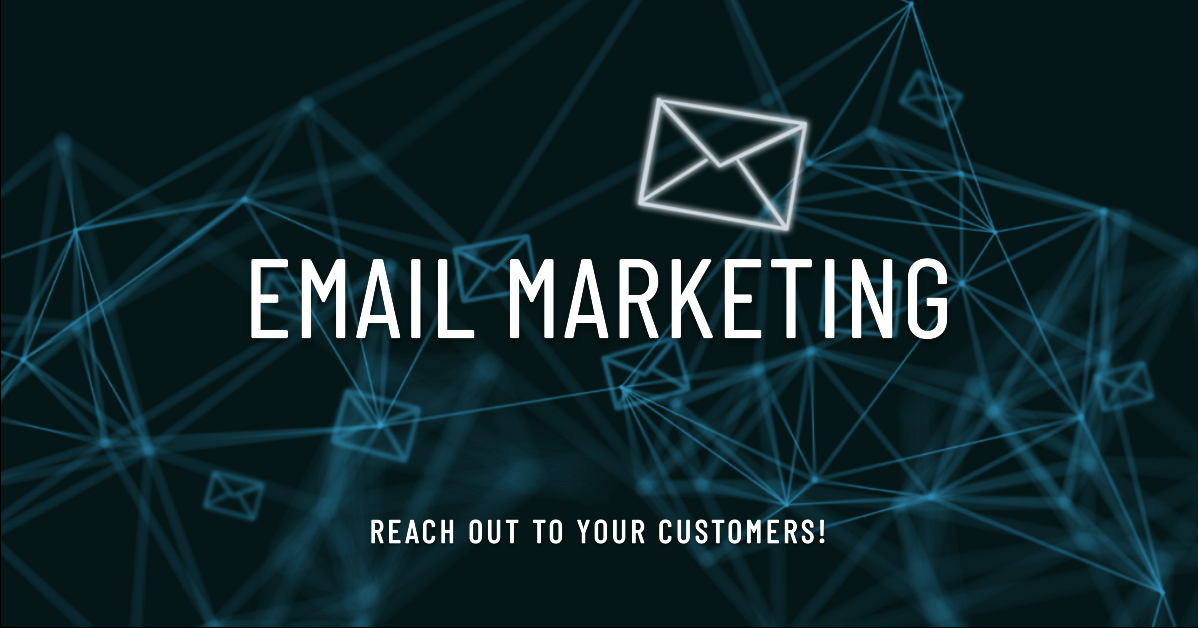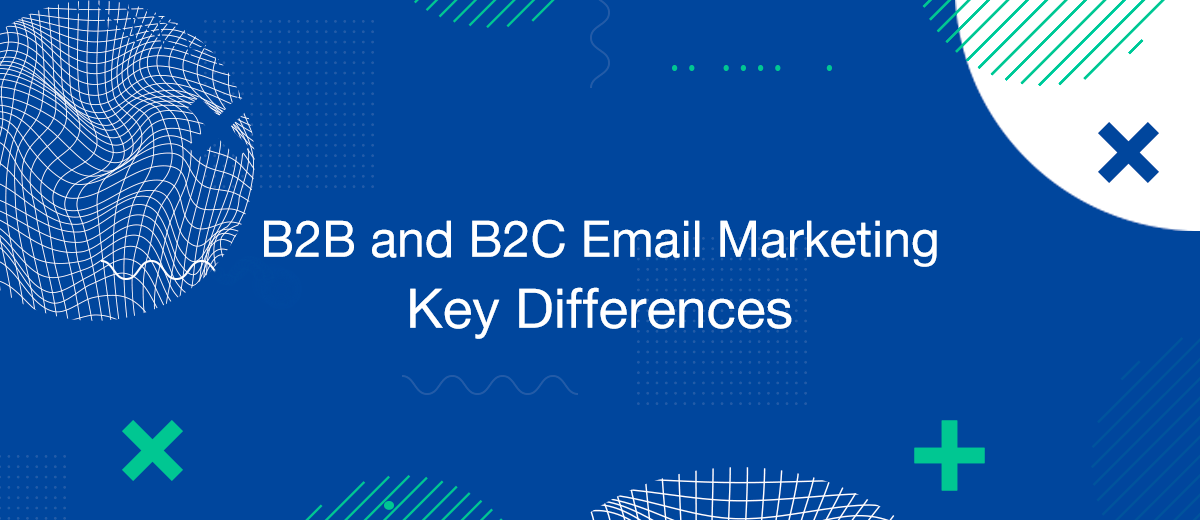Email marketing is a powerful tool for businesses to communicate with their customers, promote products, and nurture relationships. However, the approach and strategies used for B2B and B2C email marketing differ significantly. Understanding these differences is crucial for crafting effective email campaigns. This article will explore the key differences between B2B and B2C email marketing.
The Targeted Audience
In B2B marketing, the target audience consists of other businesses, professionals, or decision-makers within organizations. Addressing their needs and challenges in their professional capacity is the focus. On the other hand, B2C marketing targets individual consumers or households. These campaigns aim to appeal to personal interests and motivations.
Some of the main B2B audience characteristics include:
- Seek solutions for business challenges;
- Require detailed information for decision-making;
- Often involve multiple decision-makers.
While B2C audience characteristics are:
- Rely on personal preferences and emotions;
- Make decisions based on recommendations from friends and family;
- Primarily focused on fulfilling individual needs.
Purchase Behavior
The purchase behavior of B2B and B2C customers also differs significantly, influencing email marketing strategies. In general, B2B buyers are more rational in their decision-making process. They often require detailed information about a product or service's features, benefits, pricing, and ROI before deciding.

Additionally, B2B lead generation often involves multiple decision-makers within the organization. Each with their specific concerns that need to be addressed. As such, offering case studies or success stories is a great technique. It helps demonstrate how your product or service has helped other businesses.
On the other hand, B2C buyers make purchases based on emotional factors and personal preferences. Salesforce reports that 73% of buyers expect companies to understand their unique preferences and needs. Buyers also consider emotional factors and recommendations from friends and family. Although they may still seek information and compare options, B2C buyers are more likely to be influenced by persuasive marketing tactics that evoke emotions.
Buying Cycle Length
The length of the buying cycle is another crucial distinction between B2B and B2C email marketing. B2B buying cycles tend to be longer as they involve complex decision-making processes. There are also negotiations, often needing multiple levels of approval within an organization. In fact, there are an average of 6-10 people involved in the B2B buying cycle.
This extended buying cycle requires email marketers to focus on nurturing relationships with potential clients. They must provide valuable information at each stage of the decision-making process and maintain consistent communication throughout the buying journey.
Shorter B2C Cycles
In contrast, B2C buying cycles are typically shorter. Individual consumers make decisions faster and often based on immediate needs or desires. B2C email marketing campaigns need to be agile and timely, capitalizing on current trends.
To capitalize on shorter B2C buying cycles, implement these tactics:
- Utilize time-sensitive promotions: Offer limited-time discounts or exclusive deals to encourage quick decision-making.
- Leverage seasonal events: Tailor your marketing campaigns around holidays, seasonal trends, or special occasions to stay relevant.
- Monitor customer behavior: Use data from previous customer interactions to predict their needs and send timely offers.
The Tone of Voice
B2B email marketing adopts a more professional tone that emphasizes expertise and credibility. The language used should be clear and concise. In contrast, B2C email marketing employs a more casual, conversational tone. This helps establish a friendly rapport with the audience. However, maintaining a sense of professionalism and credibility is still essential.
With 64% of email recipients deciding to open an email based on the subject line, you want to strike the right balance in tone for your email campaigns, follow these guidelines:
Use these B2B email marketing messaging tips to your advantage:
- Use industry-specific terminology and jargon sparingly to convey expertise without alienating readers.
- Maintain a professional tone by avoiding slang, colloquialisms, or overly casual language.
- Focus on clarity and conciseness to ensure your message is easily understood.
Alternatively, here are some B2C email marketing guidelines:
- Write in a conversational tone that reflects your brand's personality and values.
- Use storytelling techniques and relatable language. Create an emotional connection with the audience.
- Be mindful of cultural differences and regional vernaculars.
Content
The difference between e-business and e-commerce revolves mainly around content. The content of email marketing campaigns should cater to the distinct interests and motivations of B2B and B2C audiences. B2B email content should focus on providing valuable information. Use industry insights and actionable solutions to the target audience's problems.


B2B emails may include:
- Case studies;
- Whitepapers;
- Product demonstrations;
- Educational resources.
B2C email content should be more focused on showcasing the benefits and features of a product from the consumer's perspective. The content should highlight how the product or service can enhance the consumer's life, fulfill a need, or provide an enjoyable experience. It is more geared toward entertainment than education.
Use visuals like images, videos, or animations to make your content more engaging and memorable. Sharing user-generated content, such as customer photos or reviews, is also a good method.
Visual Layouts
Visual layouts play a significant role in enhancing the audience's understanding of the email content. B2B email marketing campaigns often feature a clean, professional design with a clear hierarchy of information. Images, graphics, and videos are used to support the content and demonstrate the value proposition.
In contrast, B2C email marketing campaigns tend to be more visually dynamic and engaging. They employ eye-catching images, animations, or interactive elements to pique the audience's interest. In both cases, the visual layout should be consistent with the brand's identity.
Timing
For B2B email marketing, consider the target audience's schedule and habits. Emails sent during working hours are more likely to be opened and read by professionals and decision-makers. Additionally, it may be beneficial to avoid sending emails on weekends or holidays. These are times when recipients are less likely to engage with work-related content.
B2C email marketing campaigns should be timed to align with the consumer's lifestyle and habits. Research has shown that emails are more likely to be opened and read during the day, in the middle of the week.
In contrast to B2B, capitalizing on seasonal events or holidays can enhance the relevance and timeliness of campaigns.
Frequency of Sending
B2B email marketing campaigns are sent less frequently due to the nature of business relationships and the content shared. It often involves sharing in-depth information that requires more time for recipients to consume and digest. Sending emails too frequently could lead to information overload and a decrease in engagement.
Conversely, B2C email campaigns can be sent more frequently without overwhelming the audience. As long as they remain relevant and entertaining, you won't suffer from high unsubscribe rates.
To find the ideal sending frequency, you must monitor your metrics. These include:
- Open rates;
- Click-through rates;
- Unsubscribes;
- Conversions.
Spam Filters
Both B2B and B2C email marketers need to adhere to best practices to avoid being flagged as spam. However, B2B email marketers may face additional challenges due to stringent corporate spam filters and firewalls. Improve deliverability by establishing a strong sender reputation and personalizing email content.
Here are some of the best practices for avoiding spam filters:
- Use a reputable email service provider with high deliverability standards.
- Maintain a clean email list by removing inactive subscribers and invalid email addresses.
- Avoid spam trigger words or phrases in subject lines and email content.
- Request recipients add your sender's email address to their contacts or whitelist your domain.
- Include a clear and easy-to-find unsubscribe link in all your emails.
Conclusion
In conclusion, understanding the key differences between B2B and B2C email marketing is vital to the success of your campaign. It enables you to tailor your format and messaging to a specific audience and achieve better results. Taking into account the factors discussed in this article will help you create emails that are relevant, engaging, and compliant with spam regulations.
Don't waste another minute manually transferring leads from Facebook to other systems. SaveMyLeads is a simple and effective tool that will allow you to automate this process so that you don't have to spend time on the routine. Try SaveMyLeads features, make sure that this tool will relieve your employees and after 5 minutes of settings your business will start working faster.
